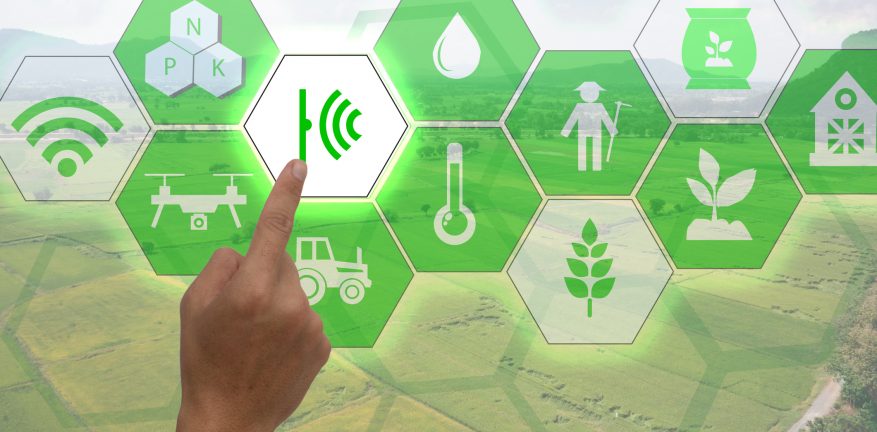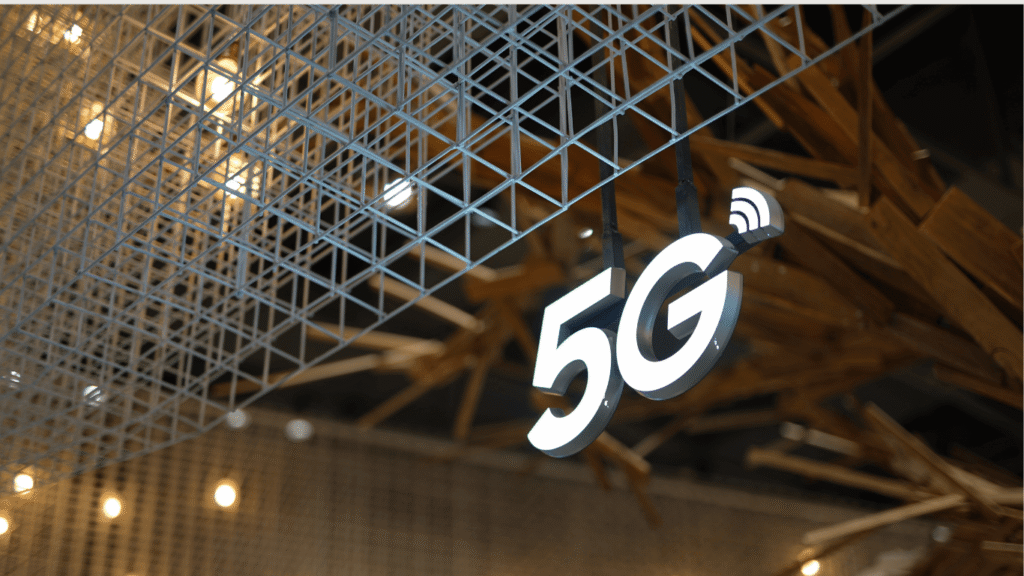5G steers global growth
According to the World Economic Forum (WEF), the Fourth Industrial Revolution has offered a window of opportunity for various sectors to improve their competitiveness and contribute to regional economies, all while supporting the United Nations Sustainable Development Goals. The massive deployment of 5G communication networks has unlocked this revolution’s full potential. Super-fast broadband, ultra-reliable low-latency communication, massive machine-type communications, high reliability and availability, and efficient energy usage are some of the critical functional drivers that 5G brings to the table as it evolves 4G networks.
5G can make it everywhere; every sector, small or medium-sized enterprises, and every ordinary person can benefit from it. We already have many corners experiencing things like smart homes, immersive gaming, IoT trucking and supply chain, robotics factories, virtual classrooms, and enormous cutting-edge technologies. 5G can make it even more widespread than these things. More than just a speed boost for your network, 5G opens up new possibilities for us to implement transformative societal solutions.
Envision a world where billions of interconnected devices work together in real-time to collect and share data that could help prevent traffic accidents; where life-saving applications could take off because of reliable connections that would never go down; and where production lines were so predictive that they could prevent downtime before it even happened. Yes, that’s the resilience of 5G.
5G’s Economic Impact
By 2035, the intelligent connectivity enabled by 5G is predicted to have sparked a global economic value of $13.2 trillion and generated up to 16 million new jobs. Rich two-way communications, the capacity to support up to one million devices per square kilometer, and response times measured in milliseconds are all viable with 5G. These features are made possible by 5G power in numerous use cases, allowing the economy to reap the cross-sectoral rewards of enhanced connectivity and multiply the impact of innovations by the trillions.
Trending proofs
- Retail: Combined with human-centric processes and XR visualizations, 5G creates in-store video streaming experiences with up to a 50 percent increase in sales.
- Manufacturing: In 5G-enabled factories, overall productivity increases by 20 to 30 percent, with gains of up to 50 percent in assembly time, 20 percent in asset life, and 90 percent in defect detection.
- Healthcare: 5G enables more remote, home-based models for post-acute care, resulting in savings of over 30% and improved patient outcomes.
- Logistics: Connected vehicle technologies could make non-impaired accidents up to 80% less severe. This could save up to $3.6 billion in accident costs and cut traffic by up to 25%.
As you see, the benefits of 5G are enormous; however, to realize these benefits, a critical mass of network deployment, research and development, and production of new devices across industries are required, in addition to substantial investments from each of the primary economic sectors in the United States.
Give the nod! Without a doubt, 5G will spur the development of new sectors, and there are real opportunities to expedite its rollout and reap its benefits even way earlier than that.

The Top 5 profit-boosting areas for companies
With the potential to boost the economy in myriad ways, 5G technology is intended for industries willing to transform. All key authorities must collaborate to fully realize the value that 5G can deliver through its vital defining features and unlock various use cases across multiple industries.
This article highlights the top 5 business categories that 5G can dominate.
If your business is on the list, you are already a winner!
A Revolution in goods from the factory to customers
5G in Logistics and Supply Chain
Fleet Management
With 5G, businesses may use real-time diagnostic data, complete with digital dashboards and metrics that shed light on driver behavior, route efficiency, and fuel economy. By linking to a management application, 5G devices provide access to in-vehicle data and allow for two-way dialogue between the vehicle’s manager and the driver. Using intelligent sensors and onboard computers can improve operational efficiency in general. Trucks can form convoys to minimize drag, fuel consumption, and costs; this is platooning. According to the European Automobile Manufacturers Association, platooning could reduce CO2 emissions by 10%.
Asset Tracking
A select number of ports worldwide use private 5G networks to facilitate fully autonomous cargo movement within the port’s boundaries, which provides accurate location and temperature of shipments, pallets, or individual assets just by affixing a low-cost asset tracker to the item(s). Receiving shipping updates at only a handful of critical checkpoints can result in unanticipated delays that can negatively impact delivery times, customer satisfaction, and budgets, but with a 5G network, a fully autonomous cargo movement is possible.

Last-Mile Distribution
According to McKinsey’s predictions, the consumer goods Supply Chain 4.0 will feature a flexible transport capability inspired by ride-sharing technology. Drones equipped with 5G connectivity could coordinate local deliveries; thereby, it can potentially increase agility in distribution and introduce new direct-to-consumer and dropshipping opportunities. The process of monitoring and delivering products to final consumers has become more nuanced, yet another way in which 5G can improve things.
Evident case studies
- Verizon claims that the faster throughput and lower latency of 5G enable better product tracking throughout the supply chain. Due to 5G’s capacity to support mobile devices at scale, it was possible to precisely track an organization’s entire supply chain as products with IoT tracking sensors were loaded onto a truck at the factory. In the event of a route delay, the manager could see the location, temperature, and other environmental factors of products in near real-time.
- Vodafone asserts that 5G improves shipment tracking and visibility. 5G can allow automated, robotic dock offloading to boost productivity, track products throughout the supply chain, and share data to improve customer service. It can also optimize delivery routes, track items to avoid losses, and provide shipment updates.
Smart factories replacing hard work
5G in the Manufacturing industry

Manufacturing companies were among the first to implement private cellular networks and see benefits. Shocking down production is not an option for factories and other industrial processes, especially when buying new machinery is prohibitive. Instead, manufacturers utilize IoT sensors to gain new insights on aging machines and notify maintenance of impending issues.
IIoT (Industrial IoT) sensors need continuous wireless access, often over tens of thousands of square feet. Private 5G networks let factories build the same network they need to support IIoT sensors and technology. By strategically planning a cellular network, companies can ensure their facilities are free of dead zones and meet service levels.
Manufacturers can reap the following perks from a 5G cellular network:
- Increased channel capacity and mobile broadband speed
- Communications with low latency for faster data transfer
- One millisecond reaction time for real-time data transmissions
- Massive connectivity enable infinite connections.
- Increased transaction speeds for AI, AR, and IoT apps
- More affordable than 4G networks
- High-Quality, Consistent, and Reliable Connections
The automotive industry is taking the lead by forming alliances with telecom operators to develop standards and test out early forms of communication. Manufacturing firms and public network providers are working to create a hybrid public-private 5G network that can meet the growing demand for business data and production.
Use Cases in Manufacturing
- Robotic process control and intelligent manufacturing automation.
- Complete product and resource traceability
- Immersive remote maintenance, service, and assembly
- Adaptations to the store’s interior layout and configuration
- Industrial process simulation
- Real-time tracking of production data and asset status
- Real-time machine-to-machine communication
So, before deploying a 5G network in the manufacturing industry-the integration of networking components with typical factory applications, protocols, and hardware must be thoroughly evaluated.
Evident case studies
- In its Transformers factory in Mexico, Siemens implemented its first live remote monitoring system for Factory Acceptance Tests (FAT). The FAT is evidence that the Siemens-manufactured equipment meets the contract specifications and is ready for installation. Customers can conduct the FAT from their locations through live streaming. This remote monitoring will be more seamless, accurate, and secure with the introduction of 5G, allowing operators to expand their applications and troubleshoot issues. This is proof of 5G being leveraged for the management and maintenance of devices.
- Ericsson has been experimenting with 5G technology-enabled augmented reality (AR) in the company’s Tallinn, Estonia factory. According to the company, approximately fifty percent of the time required to troubleshoot circuit boards is spent searching for information in documents, manuals, and schematics. The average fault detection time could now be reduced by 15% using AR troubleshooting. Further, there will likely be fewer component replacements, resulting in reduced energy consumption, chemical use, waste, and scrap.
Distance doesn’t hinder knowledge anymore
5G in Education
With 5G’s ultra-fast speeds, decreased latency, and ability to support a vast network of mobile devices, there will be exciting new opportunities to increase student’s access to learning. When considering India, 5G has the potential to bridge the digital divide by allowing for the provision of high-speed broadband coverage to students in rural areas. Be it anywhere across the globe, 5G will be helpful for students living in areas with limited access to educational opportunities.

The merit of 5G for the higher education sector
- 5G will facilitate using AR/VR-based new learning platforms, enhancing students’ educational experience.
- Using 5G to stream classes live in 8K ultra-high definition can increase education accessibility in remote areas.
- 5G can enhance the use of robots to assist students with special needs by providing the connectivity required for these robots to react in real time.
Use Case in Education
- Home internet access for students
- Developing reliable campus-wide cell phone coverage
- Using IoT sensors to track class attendance, study hall availability, and public transit
- Securing individual staff from student networks.
- Encourage efficient outdoor learning.
No more boundaries for medical treatment
5G in Healthcare
The ability of 5G wireless networks to stream high-definition video to any connected device has the potential to revolutionize the healthcare industry. Every essential element of the healthcare ecosystem may undergo a radical transformation, from telemedicine, remote surgery, and emergency response care to the expedited transmission of medical reports. 3G/4G networks can be overwhelmed when handling and transferring patient data like images and medical information. Will 5G connectivity make a significant difference? Indeed! 5G’s high speed and bandwidth make it possible to instantly transfer records like prescriptions, diagnostic test reports, medical imaging, and other medical reports. From the doctor’s and patient’s points of view, telemedicine is about to undergo a dramatic overhaul.

Do you know?
Compared to 4G’s average latency of 20 ms, 5G’s latency of 2 ms marks the bigger picture of virtual healthcare.
Healthcare Use Cases
- 5G promises ultra-low latency; a remote surgeon’s input will be nearly instantaneous.
- 5G can transfer medical imaging files and pathology test results.
- A remote patient’s contentment can be increased using wearable devices and sensors linked to 5G networks to monitor their vitals in real-time.
- 5G-enabled emergency response system allows patients to receive expert treatment while being rushed to the hospital by remotely connected trauma specialists.
- 5G can help the elderly get medical advice without long commutes.
- Remote medical care
The emergence of Agri-Tech
5G in agriculture and livestock.

Many businesses are working on “smart farming” systems that can take advantage of 5G, AI, and edge computing, all positioned to alter the agricultural sector drastically. The agricultural industry will undergo a qualitative leap as a result of the introduction of 5G technology, which will allow for the realization of precision agriculture, the achievement of best cost realization, the optimization of crop and livestock resource utilization, innovative management, and the assurance of the best price for end users.
Use Cases
- With 5G, autonomous vehicles can send and receive video and other large data streams with almost no latency from their onboard computers.
- 5G low-power and denser sensor networks, animal monitoring sensors, herd management sensors, and even intelligent collars and ear tags are used to track an animal’s location and health.
- With the help of a private 5G network, a large farm could collect data from numerous micro-monitored crop management systems, each of which would provide a real-time monitoring system and triggers for adjusting the water flow to the crops.
- 5G enables real-time, precise data analytics. Analytics software creates models and forecasts to aid farmers in decision-making based on both historical and real-time data on conditions (such as soil moisture and pesticide application).
- With the help of networked weather stations in the field, farmers can protect their crops from weather-related diseases and losses.
On emphasizing the use-case-driven analysis, it must have been evident that the most notable contributions of 5G to industrial progress will be in facilitating faster and more effective inspections via predictive intelligence, boosting workplace and worker safety, and improving operational effectiveness along with innovation.
This examination demonstrates that 5G is essential for economic development and not just a technological upgrade. Furthermore, with tele-education and telemedicine contributing to people’s well-being, 5G also serves as a socio-economic contributor.
Ready for the revolution?
Private 5G could be the answer for your business if you have stringent network uptime and reliability requirements. Collaborate with Performix to aid you with cutting-edge technologies and solutions to add innovation and ease to your businesses and industries with a 5G setup.
Talk with our experts to know more.
5G-unlocking new possibilities in India
Leading US and Korean telecom companies have partnered with India’s BSNL, Reliance Jio, and Airtel for 5G technology, setting off a global race for 5G’s market debut. 5G will usher in a new era of possibilities for telecom operators and ecosystem partners in India, especially in light of the rising profile of IoT and the options it presents to the country’s businesses and consumers.
India’s robust growth supports this dynamic market for mobile services to expand compared to any other nation. Why because, after the pandemic, the Indian government prioritized digital transformation and began investing in new technological advances. These include Fixed Wireless Access (FWA) for rural broadband, mobile cloud gaming, cloud-connected robotics, e-learning, and remote health care. The Indian Department of Telecommunications (DoT) is actively testing 5G in multiple locations, focusing on use cases for urban and rural consumers and auctioning the 5G spectrum to India’s leading service providers to guarantee consistent network connectivity.
Ashwini Vaishnaw, India’s telecom minister, stated in a recent report (Sep 2022) that the country would invest $30 billion to ensure last-mile accessibility to 4G and 5G services in every village. The goal is to create a thriving community of rural business owners by harnessing the enthusiasm of young people and incorporating them into the process of bringing reliable, high-speed Internet access to every corner of the country. A country like India is not only keen on digital infrastructure expansion but also looks forward to the social inclusion of its citizens.
Most mobile network providers in India have begun offering 5G service, and India’s leading mobile service provider, Airtel, has announced that its existing 4G SIMs are already 5G enabled, which is inspiriting its company’s subscribers. Recently, 5G services were introduced in select cities in India, and they will be rolled out nationwide within the next few years. With such rapid growth and high investments, India is expected to generate 17 billion USD in incremental revenue from enterprises by 2030, making it a potentially wise choice for 5G investment.
With the introduction of 5G and the anticipated proliferation of the Internet of Things devices, autonomous vehicles augmented and virtual reality applications, and more, India has entered an exciting new era. As the second-largest telecom market in the world, India provides investors with a great deal of opportunity, and experts in the field believe India will reshape the global telecommunications landscape within the next decade.
It’s time for some serious consideration!
Once you are ready for 5G, Performix should be the first name that strikes in your mind.






